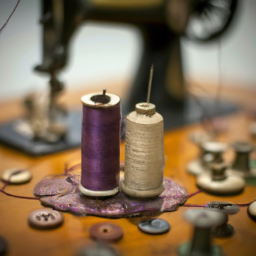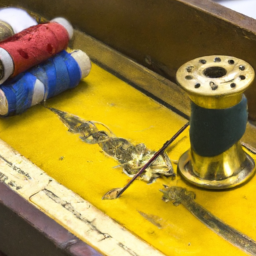
History of Sewing in India

Sewing is an ancient art form that has been an integral part of Indian history for centuries. From traditional hand-stitched clothing to the modern usage of sewing machines, India has a rich heritage of textile production and craftsmanship.
Indian textiles have always been renowned for their intricate designs, vibrant colors, and superior quality. The art of sewing, often known as “silai” or “kadai,” has been passed down through generations, fostering a deep appreciation for fine embroidery, needlework, and tailoring skills.
The origins of sewing in India can be traced back to ancient times when textiles were handwoven using various materials such as cotton, silk, and wool. The meticulous process of vegetable dyeing and intricate hand embroidery techniques added a unique touch to these fabrics. Sewing was not just a practical skill, but also a form of creative expression.
During the Mughal era, especially under the reign of Emperor Akbar, sewing reached new heights of sophistication. Royal garments were adorned with exquisite embroidery, and imported fabrics from Persia and China influenced the Indian textile industry. The Mughal emperors also brought skilled artisans from different regions, contributing to the growth and diversity of Indian sewing techniques.
In the 19th century, sewing machines were introduced to India through the British Raj. This technological advancement revolutionized the textile industry, making production faster and more efficient. Sewing machines were initially used by British textile mills, but soon, Indians adopted these machines to create their own clothing and develop their sewing industry further.
Today, sewing is an integral part of Indian culture. It is not only a means of livelihood for many artisans and tailors but also a flourishing industry, supplying garments to both domestic and international markets. The diversity of sewing techniques, from regional embroideries like Chikankari in Lucknow to Phulkari in Punjab, showcases the artistic prowess of Indian craftsmen.
Indian designers and fashion houses embrace traditional sewing techniques, combining them with contemporary styles to create unique and globally recognized designs. Moreover, the popularity of sustainable and eco-friendly fashion has led to a renewed appreciation for handcrafted textiles and sewing methods.
In conclusion, the history of sewing in India is a testament to the country’s rich textile heritage and craftsmanship. From ancient hand-stitching to the advent of sewing machines and the thriving modern sewing industry, India remains a global hub for textile production and innovative design. The art of sewing continues to evolve, preserving tradition while embracing modernity.




